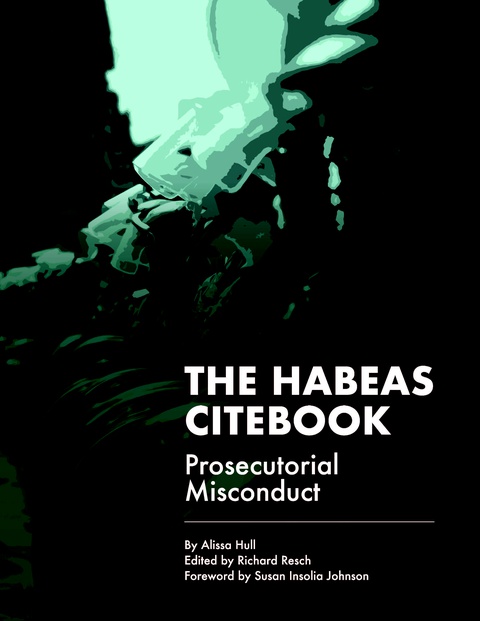Third Circuit: No ‘Constructive Possession’ of Firearm Discovered in Trunk of Vehicle Six Months After Defendant’s Arrest, During Which Time He Was Incarcerated and Vehicle Impounded in Tow Lot Whose Sole Security Feature Was a Locked Gate
The United States Court of Appeals for the Third Circuit held that the U.S. District Court for the District of New Jersey erred in applying a sentencing enhancement for constructive possession of an AK-style pistol (“Pistol”) found in a bag located in the trunk of defendant’s vehicle six months after his arrest, during which time he was incarcerated and the vehicle was impounded in a tow lot with minimum security.
Background
On October 3, 2022, Rodney Ashe was pulled over for failing to maintain his lane of travel while driving. During the traffic stop, officers observed a handgun protruding from his sweatshirt pocket. He was placed under arrest.
At the time of the arrest, the officers searched only the immediate area of the driver’s seat and impounded his car at Sisbarro Towing. At the time, Ashe had been previously convicted in 2015 for unlawful possession of a handgun revolver found in his waistband while being questioned by police.
On April 25, 2023, as Ashe’s car was repossessed and towed from Sisbarro Towing. In connection with the repossession, a Sisbarro employee found a duffel bag in the trunk of Ashe’s car, which contained ammunition and the Pistol—a firearm capable of accepting a large capacity magazine.
On May 23, 2023, Ashe pleaded guilty to being a felon in possession of a firearm for the handgun found during the traffic stop. At the time of his plea, Ashe and the Government entered into a plea agreement stipulating to a total base offense level of 12 under the U.S. Sentencing Guidelines (“Guidelines”).
On October 16, 2023, the U.S. Probation Office (“USPO”) submitted its draft presentence report (“PSR”). In the PSR, the USPO calculated Ashe’s total offense level at 17. It was calculated by relying on § 2K2.1(a)(4)(B), which applies a base offense level of 20 for those offenses involving a “semiautomatic firearm that is capable of accepting a large capacity magazine.” Both Ashe and the Government objected to the USPO’s calculation, arguing that the six-month lapse between his arrest and the discovery of the Pistol was insufficient to establish possession or control.
On November 7, 2023, the USPO submitted its final PSR, which maintained its base offense level of 20 due to the application of § 2K2.1(a)(4)(B). The PSR included an addendum stating that Sisbarro Towing advised the USPO that its lot is secured with a locked gate, that only employees or authorized people can access impounded vehicles, and that employees are only permitted to access impounded vehicles when moving them.
On December 21, 2023, the District Court held Ashe’s sentencing hearing. The District Court stated that “the standard for sentencing is preponderance of the evidence.” Under that standard, the court concluded that Ashe had constructive possession of the Pistol found in the trunk of his impounded vehicle at the time of his arrest.
The District Court based its determination on the following evidence: (1) Ashe was arrested for illegally possessing a firearm in the same vehicle, (2) he had a prior history of “committing this very same crime,” (3) police only searched the driver’s seat area of the vehicle, not the trunk, (4) the vehicle was towed and impounded upon his arrest, and (5) the towing company found the Pistol in the trunk of the vehicle that “was not opened by law enforcement at the time of the arrest.” After reviewing those facts, the District Court ruled that Ashe constructively possessed the Pistol because it was “more likely than not, based on the facts that are before [the court] in the record, that Mr. Ashe possessed that firearm at the time of his arrest.”
The District Court sentenced Ashe to 37 months of imprisonment, which was the upper end of the Guidelines range calculated apply § 2K2.1(a)(4)(B). Ashe timely appealed.
Analysis
The issue before the Court was whether the District Court’s determination of Ashe’s constructive possession of the Pistol for the sentencing enhancement’s applicability was clear error.
The Court explained that “[c]onstructive possession exists if an individual knowingly has both the power and the intention at a given time to exercise dominion or control over a thing, either directly or through another person or persons.” United States v. Iafelice, 978 F.2d 92 (3d Cir. 1992). Constructive possession of an object requires that a person have “dominion and control” over it as well as have “knowledge of that object’s existence.” Id.
The preponderance-of-the-evidence standard applies when evaluating whether constructive possession exists for sentence enhancement purposes, the Court stated. See United States v. Irvin, 369 F.3d 284 (3d Cir. 2004) (“The government had the burden to prove, by a preponderance of the evidence, that Irvin knew of the guns’ presence and had control or the power and intention to exercise control over them.”). Circumstantial evidence may be relied upon. United States v. Iglesias, 535 F.3d 150 (3d Cir. 2008) (“Constructive possession may be proved by circumstantial evidence.”).
When reviewing a District Court’s determination of constructive possession, the Court noted that it must “accept the ultimate factual determination of the fact-finder unless that determination either (1) is completely devoid of minimum evidentiary support displaying some hue of credibility, or (2) bears no rational relationship to the supportive evidentiary data.” DiFederico v. Rolm Co., 201 F.3d 200 (3d Cir. 2000). Additionally, a factual finding “is clearly erroneous when although there is evidence to support it, the reviewing body on the entire evidence is left with the definite and firm conviction that a mistake has been committed.” United States v. Montalvo-Flores, 81 F.4th (3d Cir. 2023).
Turning to the present case, the Court concluded that even “under this relatively relaxed standard, the District Court’s finding is clearly erroneous.” It noted that the location of the Pistol is not sufficient to establish constructive possession. United States v. Brown, 3 F.3d 673 (3d Cir. 1993) (“[S]imple ownership or control of a vehicle is not enough on its own to establish constructive possession of [items] found therein, but rather, additional evidence must link the defendant to the [items].”). Although common sense dictates that the owner and operator of a vehicle typically has dominion and control over the objects in the vehicle of which he is aware, the Court observed that ownership and operation “do not exist in a vacuum,” so the context of the surrounding circumstances must also be taken into consideration. See Iafelice.
The surrounding circumstances of the Pistol’s discovery “undercut the significance of Ashe’s ownership of the vehicle,” according to the Court. Ashe was not operating the vehicle when the Pistol was discovered; in fact, he was incarcerated at the time. Because of his incarceration, he had not been in contact with his vehicle for over six months prior to the Pistol being discovered. Also, the Pistol’s location when found does not support a finding of constructive possession because it was located in the trunk, not within reach of the driver’s seat, the Court explained. Cf. United States v. Lopez, 271 F.3d 472 (3d Cir. 2001) (a gun’s “location underneath the car’s front seat and therefore within [defendant’s] reach … could easily justify the inference” that defendant constructively possessed it).
Next, the Court rejected the notion that constructive possession could be found based on Ashe’s vehicle being stored in the tow lot from the time of his arrest to the discovery of the Pistol. It characterized the alleged security measures employed at the tow lot as “bare-minimum security representations” that failed to “make up for the risk of outside tampering” could have occurred during the period Ashe did not have possession of his vehicle, noting that “the only security feature described is a locked gate.”
Finally, Ashe’s previous felon-in-possession incidents do not establish constructive possession, according to the Court, because his 2015 conviction and 2022 arrest involved firearms that were significantly different than the Pistol. The firearms involved in his previous incidents were “common handguns,” but the Pistol is quite unusual—a Pioneer Arms Hellpup AK-style pistol with a 30-round magazine. The Court explained that “Ashe’s history of possessing more run-of-the-mill handguns has less probative value here in assessing constructive possession of the AK Pistol than it would if a more typical handgun was at issue.”
After evaluating “the circumstances as a whole,” the Court concluded that there was insufficient evidence to establish Ashe’s constructive possession of the Pistol and held that “the District Court’s finding was clear error.”
Conclusion
Accordingly, the Court vacated Ashe’s sentence and remanded the case for resentencing absent the enhancement for the Pistol. See: United States v. Ashe, 130 F.4th 50 (3d Cir. 2025).
As a digital subscriber to Criminal Legal News, you can access full text and downloads for this and other premium content.
Already a subscriber? Login
Related legal case
United States v. Ashe
| Year | 2025 |
|---|---|
| Cite | 130 F.4th 50 (3d Cir. 2025) |
| Level | Court of Appeals |
| Appeals Court Edition | F.4th |





